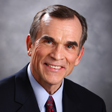Social Security for Stay-at-Home Moms (and Dads): How to Qualify for Benefits
Just because you don't bring home a paycheck doesn't mean you're not working. A stay-at-home parent can get a Social Security check just like any other worker. Here's how.


In order to qualify for a full Social Security benefit, you have to have worked 40 quarters, which equates to 10 years, earning a minimum of at least $1,640 per quarter. However, what if you elected to stay home, raise your kids and never worked for 40 quarters? Or even if you got your 40 quarters in, what if you didn’t earn enough income to get much of a benefit. Can you still receive Social Security as a stay-at-home mom or dad? The good news is you can.
If you are a married person with little to no earnings history, you can receive a benefit up to half of your spouse’s Social Security. More specifically, you receive half of your spouse’s “primary insurance amount,” which is the benefit they receive at their Social Security full retirement age, which right now is age 66 or 67 for most people.
When you receive half of your spouse’s Social Security, this is known as the "spousal benefit."

Sign up for Kiplinger’s Free E-Newsletters
Profit and prosper with the best of expert advice on investing, taxes, retirement, personal finance and more - straight to your e-mail.
Profit and prosper with the best of expert advice - straight to your e-mail.
There are a few rules and restrictions to keep in mind if you want to claim this benefit:
- You should take the greater of your own Social Security benefit, or half of your spouse’s.
- You must be at least 62 years of age and, if you apply before your full retirement age, the benefit will be reduced. For example, if your full retirement age is 66, and you take it at 62, you receive 70% of the amount you’re entitled to at age 66.
- As of May 1, 2016, your spouse has to be receiving their Social Security in order for you to take the spousal benefit, unless they were grandfathered in under the old “file and suspend” rule.
- Generally, you must be married for one year before you can get spouse’s benefits. However, if you are the parent of your spouse’s child, the one-year rule does not apply.
- Only one spouse in a marriage can claim this spousal benefit.
Keep in mind, if you are still working and you take a spousal benefit before your full retirement age, part or all of your benefits may be withheld depending on how much money you make. If you make more than $21,240 per year, then for every $2 you earn above this threshold, $1 in benefits is withheld. You don’t lose these withheld benefits. They will be added into your monthly benefit later when you stop working or reach full retirement age. At that time, your benefit is recalculated and includes the withheld benefits to make the overall benefit higher.
Also, if you are divorced, you can receive a spousal benefit as long as the marriage lasted 10 years. You must be at least 62 years of age, you can't be married at the time you apply, and your ex-spouse must be at least 62.
The big difference in the case of a divorce is that your ex-spouse doesn't have to file for his or her benefit in order for you to receive the spousal benefit as long as you have been divorced for at least two years.
Finally, in a case where you are a widow, you can actually claim the deceased spouse’s benefit as early as age 60 as long as the marriage lasted nine months, and instead of receiving half of your deceased spouse’s Social Security, you will receive 100% of the deceased spouse's earned benefit if you file at your full retirement age. Keep in mind this survivors benefit will be reduced if you apply early.
Get Kiplinger Today newsletter — free
Profit and prosper with the best of Kiplinger's advice on investing, taxes, retirement, personal finance and much more. Delivered daily. Enter your email in the box and click Sign Me Up.

-
 Should You Get Earthquake Insurance?
Should You Get Earthquake Insurance?Standard home insurance doesn’t cover earthquakes, but paying extra for earthquake insurance isn’t just for Californians.
By Rachael Green
-
 Stock Market Today: Dow Drops 699 Points After Powell Speech
Stock Market Today: Dow Drops 699 Points After Powell SpeechFed Chair Powell warned of a slowing economy and higher inflation but said the central bank isn't ready to cut rates just yet.
By Karee Venema
-
 A QLAC Does So Much More Than Simply Defer Taxes
A QLAC Does So Much More Than Simply Defer TaxesHere are the multiple ways you can use a QLAC, from managing retirement risks to creating income for specific retirement needs and wants.
By Jerry Golden, Investment Adviser Representative
-
 Self-Directed Brokerage Accounts: Retirement's Hidden Gem?
Self-Directed Brokerage Accounts: Retirement's Hidden Gem?SDBAs are often overlooked, but they can offer more flexibility and growth potential inside your 401(k) when actively managed by a professional.
By Scott M. Dougan, RFC, Investment Adviser
-
 Early-Stage Startup Deals: How Does a SAFE Work?
Early-Stage Startup Deals: How Does a SAFE Work?Investing in an early-stage startup can get complicated fast, so the venture capital industry turns to other investing options. One is a SAFE.
By Murat Abdrakhmanov
-
 Should You Hire a Public Adjuster for Your Insurance Claim?
Should You Hire a Public Adjuster for Your Insurance Claim?As natural disasters strike more often, insurance clients are asking, 'What should I do, or who should I hire, if my insurance company is jerking me around?'
By H. Dennis Beaver, Esq.
-
 Tips to Help Entrepreneurs Create Self-Sustaining Businesses
Tips to Help Entrepreneurs Create Self-Sustaining BusinessesWith the right processes and people in place, a truly sustainable business can be efficiently passed on to a successor and run profitably on its own.
By Jason L Smith, CEP®, BPC
-
 Navigating Annuity Taxation: A Guide for Financial Advisers
Navigating Annuity Taxation: A Guide for Financial AdvisersUnderstanding the essentials of taxation in retirement income strategies involving annuities helps ensure positive outcomes for clients.
By Jake Klima
-
 How Google Reviews Can Help (or Hurt) Financial Advisers
How Google Reviews Can Help (or Hurt) Financial AdvisersDon't leave your Google Business Profile unclaimed — someone else can make changes if they claim it. Also, here's what you can (and cannot) do with the reviews.
By Jeff Briskin
-
 How Baby Boomers and Gen Xers Are Redefining Retirement Living
How Baby Boomers and Gen Xers Are Redefining Retirement LivingBoth generations need to embrace change and leverage real estate as a dynamic asset in their retirement planning. Here's how financial advisers can help, too.
By David Conti, CPRC